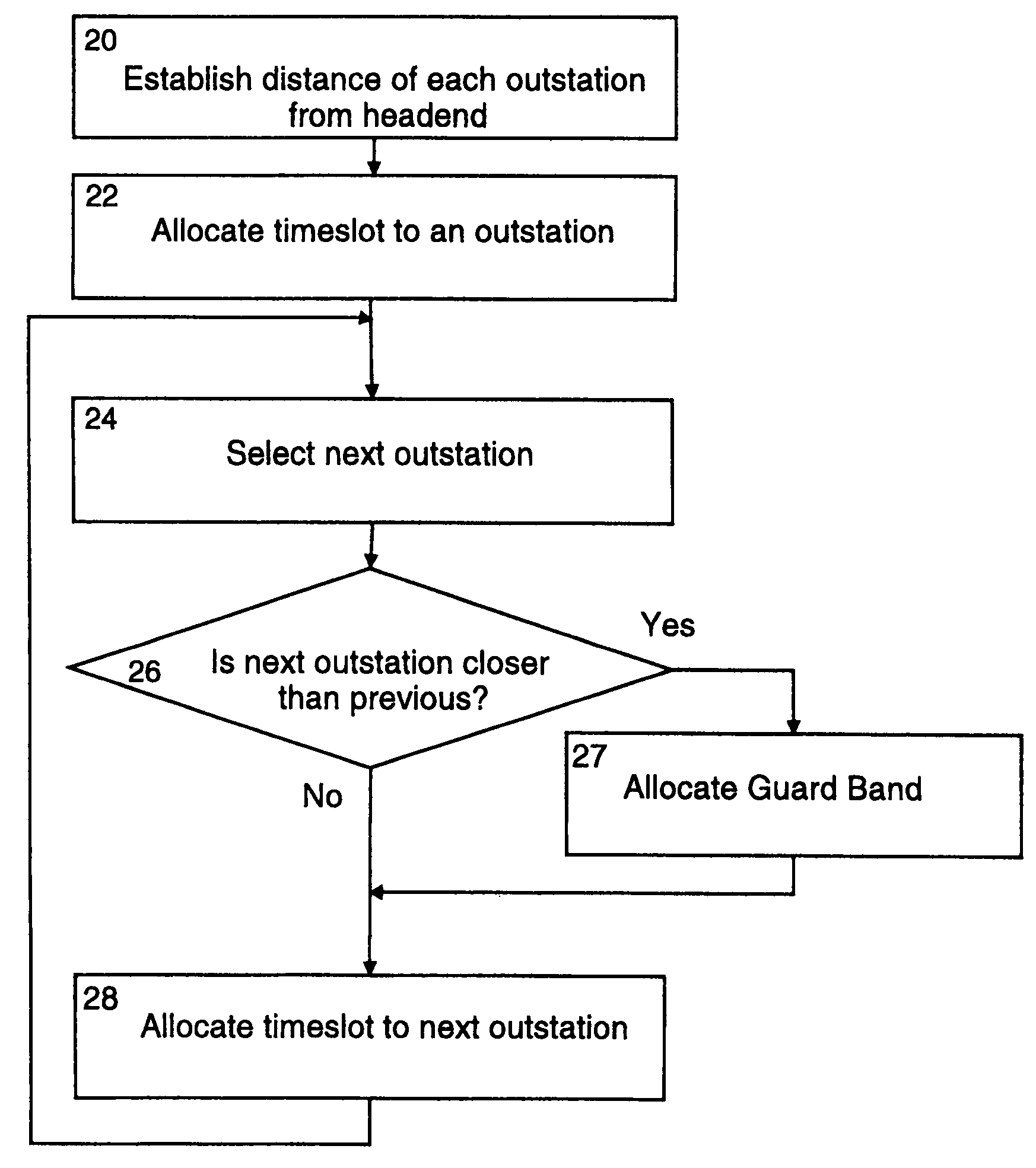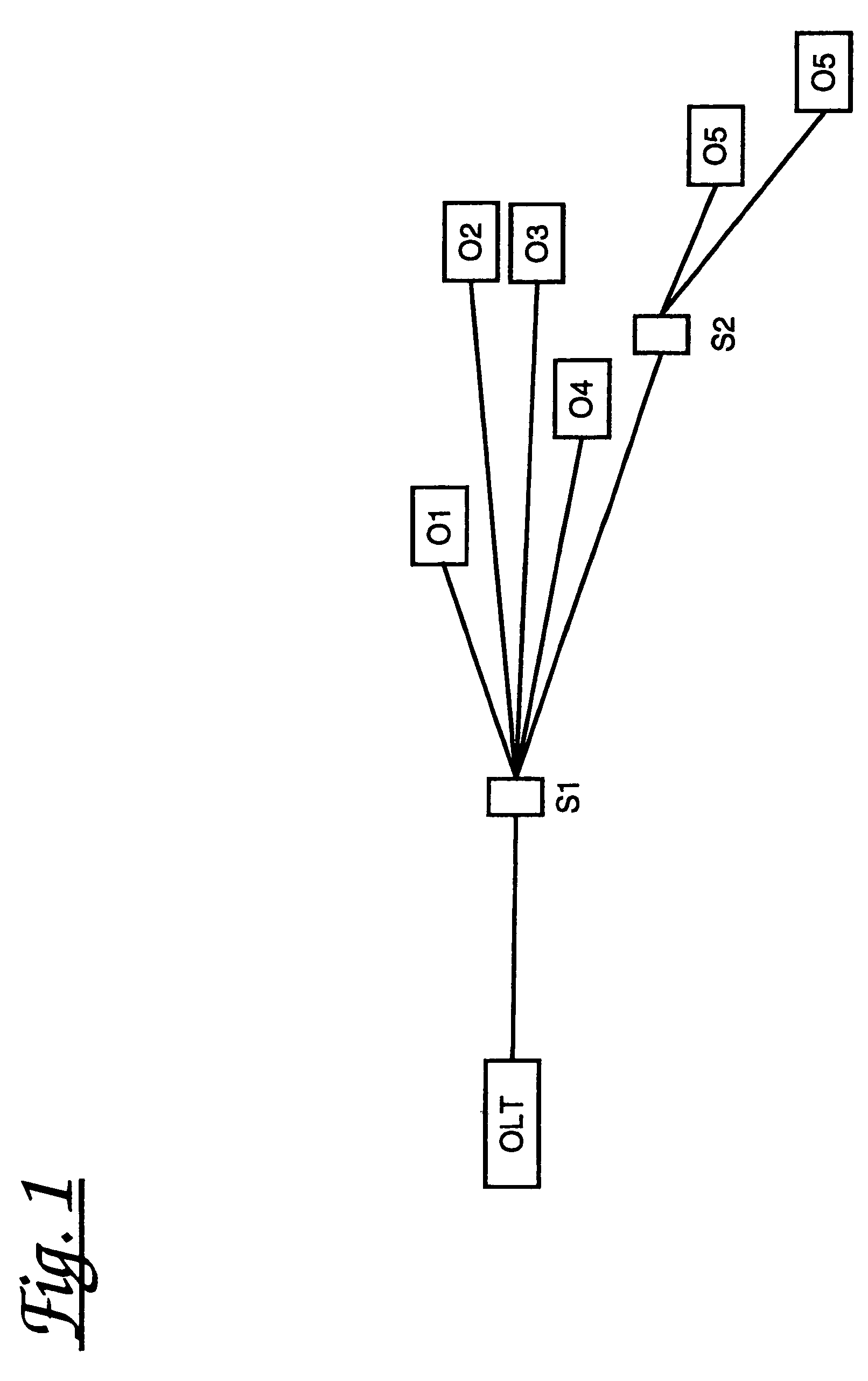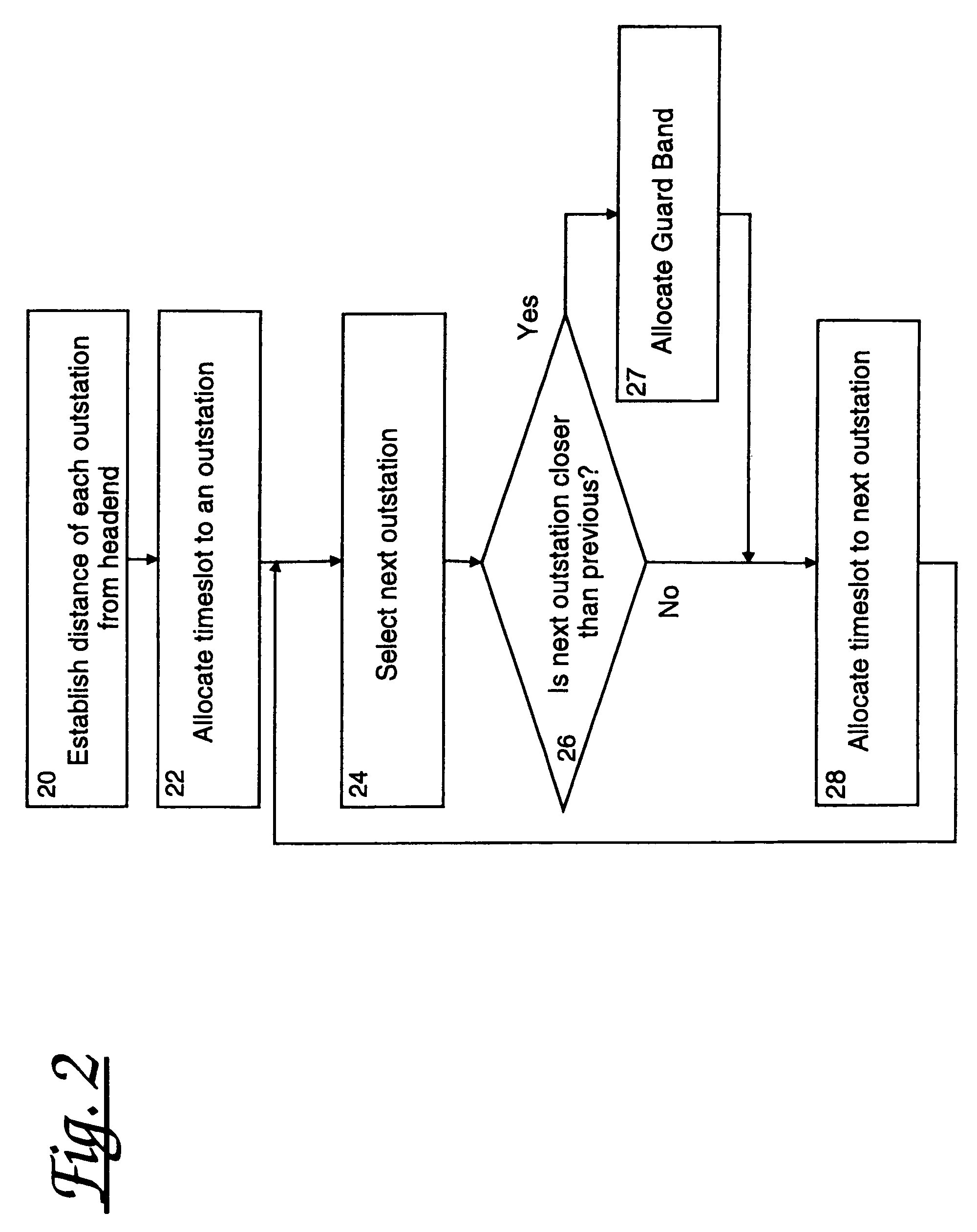Time slot scheduling for shared-medium communications networks
a technology of shared-medium communication network and time slot scheduling, applied in data switching network, transmission monitoring, multiplex communication, etc., can solve the problems of reducing bandwidth efficiency, reducing bandwidth utilisation efficiency, and many telecommunication services that require a bounded transmission delay, so as to reduce complexity of system, and improve bandwidth utilisation efficiency
- Summary
- Abstract
- Description
- Claims
- Application Information
AI Technical Summary
Benefits of technology
Problems solved by technology
Method used
Image
Examples
Embodiment Construction
[0052]Gigabit Ethernet PONS have been proposed as a means of cost effectively providing fibre access to homes and businesses. Current techniques include a GEPON based on very simple protocols which trade off bandwidth for latency and limited fibre deployment rules, and significantly complex Ethernet PONs with complex marshalling systems for outstation management.
[0053]The present invention provides a simple PON ranging protocol which eliminates these trade-offs and allows GEPONs with large numbers of outstations (e.g. 256 vs currently 16) to be achieved, while simultaneously eliminating differential distance limitations, all at high bandwidth efficiencies.
[0054]This ranging technique will be of particular value for PONs above 1 Gbps and / or 32 way splits.
[0055]This optical aggregation of traffic from smaller businesses will be of increasing importance as optical switching and multiplexing of wavelengths becomes more widespread.
[0056]The invention relates in particular to the implemen...
PUM
 Login to View More
Login to View More Abstract
Description
Claims
Application Information
 Login to View More
Login to View More - R&D
- Intellectual Property
- Life Sciences
- Materials
- Tech Scout
- Unparalleled Data Quality
- Higher Quality Content
- 60% Fewer Hallucinations
Browse by: Latest US Patents, China's latest patents, Technical Efficacy Thesaurus, Application Domain, Technology Topic, Popular Technical Reports.
© 2025 PatSnap. All rights reserved.Legal|Privacy policy|Modern Slavery Act Transparency Statement|Sitemap|About US| Contact US: help@patsnap.com



